In need to run a string line across the side of my house, 52′ long. I’m a DIYer, never used a string line before. I need to know the basics.
(1) What type of sting do you use?
(2) How do you level the string over a long distance?
(3) How much distance between nails would you go? I’m thinking breaking the length in 1/2, which would leave me with a 26′ between nails.
I know this is a basic skill for you guys, please excuse my ignorance. Thanks for your help.
Mike K
Aurora, IL
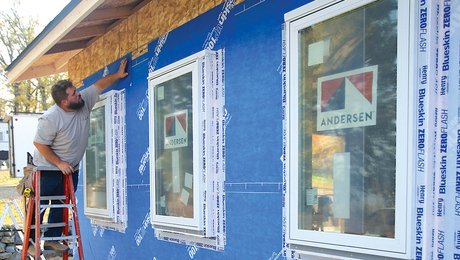
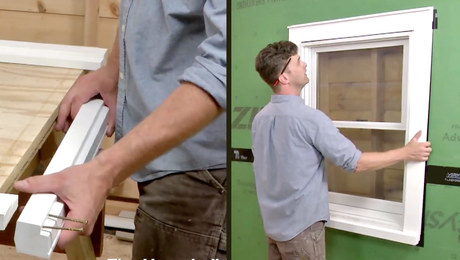
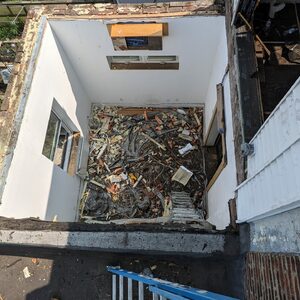
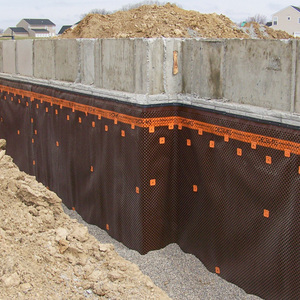

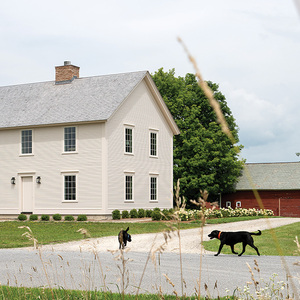













Replies
Mike, perhaps knowing exactly what it is you're trying to accomplish with this string would enable some of us to help you out a little bit better.
I think we need help from a physicist.
String theory.
Dieselpig,I'm trying to establish a level line across the side of the house in order to replace the water table, level the porch sills, and install cedar shingles along the side of the house, see attached photo. This is an old photo - shingles along the bottom have all been removed. The arched porch has settled over the years and the porch opening sills are not level - enough that it can be seen visually. I intend to level them prior to installing the shingles. I figure if I can get the water table and porch sills level than I have a base line from which I can use a story pole to establish my shingle courses.I'm I approaching this the right way?
Once multi strand string about 1/16" gage pulled tight with a string line level will work fine.
"I never met a man who didn't owe somebody something."
I'm I approaching this the right way?
Mike --
Nice looking house! And good call to rebuild/replace the water table detail. It adds a lot of visual interest. I did a similar project on my own house a few years back.
One word of advice I can give you is to pay attention to existing lines on the house. That is, it can be more important to put your new shingles parallel to existing geometry rather than try to get the new shingles dead level and then have them skew to other lines on the house. If you can find any trim detail that is straight on the house (sight down it to check straightness) you can simply use it as a datum by which to set the rest of your work.
Another question I have is regarding your porch sills. I can't really tell from the picture, but keep in mind that porch decks are supposed to slope 1/4" per foot (or so) away from the house. In lots of old work, the shingles and trim followed this slope. This may or may not be relevant to what you're doing, but I wanted to bring it to your attention.
Are you replacing the clapboards, too?
Edited 6/10/2007 10:21 pm ET by Ragnar17
I agree! if the house is 2" out of level and there is no reason to level it, then the lines should run dot to dot straight or they will make things LOOK out of level
Welcome to the Taunton University of Knowledge FHB Campus at Breaktime. where ... Excellence is its own reward!
Piffin,I checked the hole where the water table fits with a 6' level. It appears to be very close to dead level. From the point where the porch starts there is a definite downward slope that can be seen by a casual observer. I have the interior of the porch gutted down to the studs. I plan on cutting the nails under the sills and shimming them up to get them level. The porch is original including the shingles, based on the number of layers of paint on them. It was built with no real foundation. Corners sit on very large limestone slabs, which have settled in the last 120 years.
Buy, beg, borrow, rent or steal a builder's level, preferably laser
Welcome to the Taunton University of Knowledge FHB Campus at Breaktime. where ... Excellence is its own reward!
Are you going to fix the porch foundation before putting up that pretty new siding?
When these guys say pull the string tight, they mean tight. Tight like you think the string's going to break. Then one more tug.
Use one hand to pull some slack on the string, and the other to pull back on the end of the string that's looped around the nail.
Leather Glove for protection tight on the pulling hand if you haven't done it before."Poor is not the person who has too little, but the person who craves more."...Seneca
run two batter boards about sixty feet apart. nail in each. loop one nail. pull 52 feet. wrap string (twist) nine time, slip over other nail and pull loose end. pull the hell out of it, pull till its like a guitar spring. (twang) 52 feet is not a long distance. I usually pull 150 feet without bridge.
I use the spring at lowes contractor desk, it white, green, pink, yellow.
.
Most hated person on the net
You forgot the first part!Make darn sure you have the original nail with string tied to it well secured! I had a roofing nail come loose once as I was hauling things tight and it punched a nice hole in my lip. Saw another guy get his ear ready for an earing the same way - unintentionally.
Welcome to the Taunton University of Knowledge FHB Campus at Breaktime. where ... Excellence is its own reward!
dont you love it when those things pop,people ducking every where,.Most hated person on the net
Mike i wish i could draw this for you, At one end use a 8p nail at the other end put another 8 penny nail half way in, Nearby put another nail When you go to the end make a loop, With your left hand pull , with your right hold the tension, You will have one or 2 turns , Pull very very tight then loop around your nail to hold the tension, Then still holding twist around the 3d nail with a couple loops, You dont have to have the 3d nail but i find its easy to remove and i dont lose any tightness cause i can go to it, Being a form carpenter in the union we did this every day, Im surprized how many carpenters dont know the basics, As was said tight as a guitar string make sure your knot is good and your first nail in tight, nothing like getting slapped
In regards to leveling the string,
Piffin had already mentioned a builders level, also called a transit. A laser level is another option. Another option still, is a water level. I kinda like the water level. It's very accurate. You can buy one for about $30.00, and you can buy additional hose for longer runs like yours.
Mike,
A builders level is not the same as a transit. A transit allows movement of the glass in both horizontal and verticil planes. A builders level only does it horizontally.
"Poor is not the person who has too little, but the person who craves more."...Seneca
Thanks Dovetail, I didn't know about that difference between the two levels.
I'm sure the topic of levels have been covered in the past, but that would make for a good forum here at Breaktime since there are a handfull of "distance measuring" devices.
A transit can lay out angles and planes off level that a builders level cannot do. A transit can be used to do the work of a level, but not the other way around. They are not the same tool.
Welcome to the Taunton University of Knowledge FHB Campus at Breaktime. where ... Excellence is its own reward!
A plastic one-gallon milk jug and 30 ft length of clear poly tubing makes a great one-person water level. Pierce the cap and push the tubing through, fill the jug and get any air bubbles out of the tubing. You can mark as many points of equal height as you want, and snap chalk lines between (or a dry line if you don't want permanent marks). Unlike a builder's level or laser level, it can shoot levels around corners. A bit of food colouring in the water makes it easier to read.
I hope this is not too off topic. I have an older builders level. I want to be sure it is calibrated correctly. I was on a job not too long ago where there was issue with the concrete slab pitch. The agrument got down to who had their builders level calibrated most recently. Is there an old school trick for me to check mine out? I want to use it to do a big deck railing system. Thanks. Mike L.
rooferman, First set your level up so the vial reads level , swing the head 180 deg. Should read precisely the same at the vial. If not it needs calibration Next , set up two targets 100 ft away from each other. Set your level up near one (3-5' away) , shoot the target and mark it at the level line, now swing your level to mark the other target. Move the level the 100' down to the other target and do exactly the same thing using new marks.
Each target should end up having two marks exactly the same distance apart from each other. If not it needs calibration. Or bring it to a repair shop and have it cleaned and calibrated!! I also check mine against other levels periodically just to keep an eye on things."Poor is not the person who has too little, but the person who craves more."...Seneca
"First set your level up so the vial reads level , swing the head 180 deg. Should read precisely the same at the vial. If not it needs calibration"
this is not exactly true.
the magnetic dampers inside a builders level will compensate for some degree of variance. most good laser levels are designed the same way.
I once thought the same as you, but was corrected by the survey equipment company when I had my level calibrated.
as for you "test"- that is a good method. you can also set yourself up in the middle and then move it 10' the other way to take your second reading.
flip to page 9 in the following link. sorry I tried to link directly to the page but it wouldn't.
http://www.cansel.ca/Cansel2005-English/ProductCentral/pdf/2007West.pdf
View Image View Image
Edited 6/12/2007 4:09 am by alrightythen
Edited 6/12/2007 4:14 am by alrightythen
Edited 6/12/2007 4:17 am by alrightythen
alrightythen, You are correct ONLY if the level is one that has the self dampening compensator.
But if it does what I posted would be wrong and just waste time and money on a visit to a repair shop. Most modern ones that I see do have that feature, I own an older Topcon that is that way. I also have one that does not, it is maybe 45 years old and has no compensator in it. If the bubble vial is off when swung 180 deg. then it needs calibration."Poor is not the person who has too little, but the person who craves more."...Seneca
I have never seen or worked with one of the older ones that you speak of, and probably most have not either - at least newbies that most likely will come across self adjusting ones. a model that is not self adjusting most definitely needs to be calibrated correctly.
the difference should be made known - which between the two of us, I think we have accomplished ;) View Image View Image
alrightythen,
LOL,
yes I think we have.
The non-compensated ones are best left in the past, I can't tell you how many times I was handed one that was out and told to go set grade for a pour or a deck ledger etc. and found the thing would be off by several inches in 75'. My first boss used to set his up in the middle of a foundation because that way the margin of error would be less than if he set it up at one end of the building. I did learn to check every damn leveling tool I was ever handed however!"Poor is not the person who has too little, but the person who craves more."...Seneca
"My first boss used to set his up in the middle of a foundation because that way the margin of error would be less than if he set it up at one end of the building."
that leads to an interesting question:
will it be out more because of distance or because of rotation? ( swinging around 180 degrees vs working within say a 90 degree parameter)
there will a a combination of the two. much better working with something that reads true - but something to think about anyway View Image View Image
If it is out, it will be out more due to distance than to rotation. It is always best to set up near center
Welcome to the Taunton University of Knowledge FHB Campus at Breaktime. where ... Excellence is its own reward!
alrightythen, I always considered his logic to be flawed, but there was no convincing him of that .
(One of the reasons I bought my own and took it to his jobs!) The "level " would be shooting at an inclined plane from a point along that plane. Where you placed the "point" doesn't matter I don't believe, the amount of error relative to true "Level" has to do with the distance the targets are apart. A building with the level set in the center and swung 180 deg still has a 50' distance between targets, same as setting the level up at one end and shooting from there. It doesn't matter how far away from the building the "level " is set up. For example a level that is out 1/4" in 10' is going to give you a 1 1/4" error over 50 ft. no matter where you place it.
(Edited for early morning math error ;-0 ) Which makes for a good sewer line but not a level building. ;-)"Poor is not the person who has too little, but the person who craves more."...Seneca
Edited 6/12/2007 11:04 am by dovetail97128
"For example a level that is out 1/4" in 10' is going to give you a 1 1/4" error over 50 ft. no matter where you place it."
I think there is more to think about. and I 'm not debating but rather I like to consider it and understand things to get to the bottom of something.
lets say you are out 1/4" over ten feet. and the level reads with an incline facing one way turn 180 degrees and the level now reads with an equal decline. working from center ( at 5') you should be out the 1/4' - right? now do it the other way shooting from one end over ten feet right away you start at 0 and shoot 1/4" out at the far end - the same 1/4". I think this gets skewed when you start to take readings at different points. rarely would you take a reading at simply one precise point away. as you swivel you start to work at angles which changes the distance....
anyway, I think this is an interesting topic even it is a high jack to the thread....sorry OP View Image View Image
alrightythen,
I was thinking about this when you were typing. I do believe I have been wrong all these years. .. No maybe about it , I was wrong. Piffen , my old boss and you are correct. I had to envision a shallow dish , round so all points along the rim are equidistant form the center where the "level " is located.
All points along the rim would be at the same elevation , but would be higher or lower than the level depending on which way it was out in relationship to the eyepiece. Set the "level " at one end and as you say the error will grow. Darn I hate being wrong in public!"Poor is not the person who has too little, but the person who craves more."...Seneca
Edited 6/12/2007 11:25 am by dovetail97128